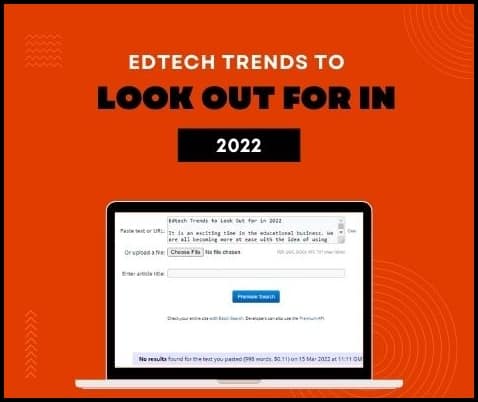It is an exciting time in the educational business. We are all becoming more at ease with the idea of using technology in the academic sphere. Historically, the education business lagged in terms of technology integration. We can now observe the impact that technology is having on it. The last two years were tumultuous in Edtech. Never before has so much money been spent on so many gadgets in such a short amount of time.
But, now that more students – and instructors – have greater access to technology than ever before. Ed-tech isn’t going away in the next years, and it’s likely to diversify and employ novel tools and strategies to respond to a changing learning ecosystem. These are some of the changes we anticipate our clients and other Edtech organizations will notice in 2022.
Gamification
Everyone knows that learning is a tedious and time-consuming process, and we’ve all been there. However, if you set goals, tasks, or progressions for yourself, you may make learning more fun and engaging. An instructional strategy known as “Gamification” involves bringing elements of video games to the classroom. It’s all to improve results.
Because of the increased reliance on technology in the classroom, more lessons will be taught and learned through games. Nowadays, students are developing content for each other and gamifying the classroom. Students in middle school, especially digital natives, have high expectations for their digital apps; therefore, we need to ensure that the games they are playing satisfy those expectations. Students and teachers alike will be encouraged to produce their content and collaborate to keep students engaged and motivated. Games are a great method to connect with students who have spent the last two years learning and socializing online.
Learn with AI
Virtual reality (VR) has become a popular way for businesses to connect with their consumers and potential customers. Still, it’s also a great way for students to study and have fun while doing it. Artificial intelligence can help students learn better and quicker when partnered with high-quality learning resources and instruction. Personalization is one of the most prominent educational trends. Students now have a customized approach to learning programs based on their own unique experiences and interests, thanks to the application of AI. AI can adapt to each student’s level of expertise, learning speed, and desired goals to ensure they get the most out of their education.
Moreover, AI-powered tools make learning available to all students and from any location. Each student learns at their rate, and having 24/7 access allows kids to experiment with what works best for them without waiting for an educator. Furthermore, students worldwide can obtain a high-quality education without paying travel or living fees. As a result, complex topics that could only be taught in-person (think about complex topics, such as scales and arpeggios for example) are now accessible and easy to learn. This gives opportunity to users to experience AI in their learning process and make significant progress in their learning journey.
Digital Textbooks
We must embrace digitization because media literacy and technology proficiency is becoming increasingly vital in the workplace. In online textbooks, students can take notes, search for key terms or chapter titles quickly, change font sizes, copy text, and listen to audio translations of printed material, all at the push of a button. Online interactivity prevents users from sifting through hundreds of pages of content to find the information they are looking for. Students don’t have to worry about their note-taking and highlighting habits ruining books for future students who like a clean page because of the digital side. Students who have access to digital textbooks are more inclined to use them. As a result of the pandemic, students increasingly turn to digital textbooks as a convenient, all-in-one resource for their education and research. These materials are available to students at any time, and students may easily highlight and locate the information they need. In addition, they allow pupils to seek meanings and more while reading.
Evaluation Strategy
Routine memorization and written exams are the key assessment methods in current educational programs. In the future, evaluation methods will shift away from relying on reams of paper and toward a more technology-based approach. To do well on a written exam, students must thoroughly understand a theory and then demonstrate their understanding on paper. There is no testing of practical knowledge. A shift toward project-based, practical, and experimental evaluations is expected in the future, with an increasing number of educational assessments conducted in the field.
Hybrid Learning
Hybrid learning is one of the most hotly debated topics in the sector when it comes to ed-tech developments. It is a method that mixes face-to-face instruction with one or more forms of remote online education. Because of the epidemic, the pandemic has strengthened this tendency and helped to widen the educational sector’s communication options. Everything that happens in the classroom is available to students and from any location. Even if students have missed some classes, they can still make progress. In this approach, learning has become more student-centered throughout time. Its ability to accommodate various work schedules is one of its most appealing features. The expense of travel and the resources needed for business or school is also reduce.
The pandemic has made online and remote schooling the norm. These Edtech trends, on the other hand, are here to stay. As a result, it will impact how we learn and communicate with one another. They should be implement immediately by teachers. Students will be able to practice critical thinking in an interactive environment if they can explore these factors. Suppose you’d like to improve hybrid learning by including tools for interactive classes.

Leave a Reply
You must be logged in to post a comment.